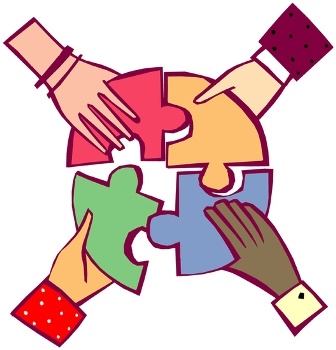
Mastering Organizational Buying: Key Steps and Factors

Organizational buying refers to the process of purchasing goods or services for a business It involves four key steps: setting expectations, going through the buying process, resolving conflicts, and providing feedback after purchase Factors that affect organizational buying include objectives, structure, and constraints Ultimately, the goal is to maximize profits and achieve the best possible outcome for the business
Profit-oriented businesses are constantly striving to maximize their earnings and will take the necessary steps to evaluate their processes and make informed decisions to achieve this goal. This is where organizational buying comes into play. Formal institutions use this process to determine the best products or services to purchase by identifying, assessing, and selecting the ideal alternative from among available brands and suppliers.
Ideally, the buying centre in an organization comprises individuals who are directly or indirectly involved in the organizational buying process. These individuals possess distinct abilities and perspectives, making the buying centre unique. While not everyone may make the decisions regarding the purchase, their influence in the process qualifies them as part of the purchasing process.
It is crucial for the supplier to deliver top-notch products and services to the organization to avoid negative impacts on its performance and business relationships. However, with the rise of globalization, numerous suppliers and brands have the capability to produce comparable products that cater to specific markets. Hence, conducting extensive research becomes imperative to make informed purchasing decisions for the organization.
4 Steps in Organizational Buying
Also there are a few crucial parameters to be followed by an organization before it can make any solid decisions regarding a purchase. They are:
Expectations
Buying Process
Conflict Resolution
Purchase and Feedback
Let us now have a brief look at these parameters
1. Expectations
The perception of an organizational consumer's expectations is influenced by several factors such as the quality and efficacy of the external products, their brand value, and the reputation of the suppliers from whom they are procured.
2. Buying Process
The expectations of a consumer when making a purchase are influenced by various factors related to the process. These include the reputation and background of the companies involved, the level of knowledge established, any preconceived notions held by the consumer, their overall perception, as well as their past experiences and satisfaction levels with previous purchases.
The buying processes of organizations and consumers are generally quite similar, with only a few exceptions. Although there may be instances where autonomous decision making is involved, more often than not, organizational buying requires group decision making.
In the organizational buying process, competitive bidders are required to provide written specifications of all terms and conditions related to the sale. Open bidding is typically preferred as it allows all potential competitors to view each other's bids, promoting transparency throughout the process. However, there are instances where closed biddings are encouraged, particularly when the organization wishes to keep the terms of the contract confidential. Under this type of bidding, competitors' bids remain confidential until the winner is announced.
3. Conflict Resolution
Conflict resolution becomes necessary when a group of individuals with diverse backgrounds, cultures, and perspectives are involved in the decision-making process. Disagreements may arise among members, which require the implementation of conflict resolution strategies.
Obtaining all the necessary information before making a final decision is a common approach to conflict resolution known as problem-solving. This method is often viewed as the most effective since it ensures that all relevant information is taken into account before a decision is made.
4. Purchase and Feedback
Persuasion is a powerful method used by one group to convince members of the other group to either make or avoid a particular purchase. The ultimate winner is determined by the group or member who successfully convinces the opposing party.
Once all parameters have been fulfilled, the final decision to purchase the product is made. Any feedback obtained is meticulously documented for future reference.
Regular follow-up, proper maintenance and standard service calls are all quite essential after the deal is done.
Factors in Organizational Buying
Organizational Buying depends on
1. Buying objectives
2. Buying structure, and
3. Purchase constraints.
1. Buying objectives
In order to make an informed purchasing decision, it's crucial to identify the underlying reasons for doing so. This involves determining the specific motive behind choosing a particular product and assessing how it will impact the organization's operations. It's important to consider the potential benefits of the purchase and its potential impact on the overall success of the organization.
2. Buying structure
It is essential to consider the reliability of the supplier to guarantee a consistent supply of the product throughout the year or the required duration. This factor ensures that the firm's production process remains uninterrupted, minimizing any unnecessary inconveniences.
When making organizational purchases, it is essential to adhere to the established structure outlined by the company's guiding principles. This involves following a protocol to ensure that all relevant parties are involved in the decision-making process and that all necessary procedures are followed. By doing so, it becomes easier to verify that a sound decision was made prior to proceeding with the purchase, thereby facilitating any necessary follow-ups. Additionally, some manufacturers may prefer to work with agents when selling their products, and organizations may find it beneficial to engage these agents for their purchasing needs.
3. Purchase constraints
In the realm of organizational purchasing, there are various factors that come into play when making a decision. These factors can have a significant impact on the purchasing process and can create obstacles that must be overcome. Common barriers include limited financial resources or the unavailability of a desired product at a given time. These hurdles must be addressed in order to successfully complete the purchasing process and achieve organizational goals.
This can lead to delays in the purchase process and may cause frustration for consumers who are in need of the product or service. Additionally, the budgeting process can be complex and difficult to understand for the general public, making it hard for them to fully grasp how their tax dollars are being allocated. As a result, there is a lack of transparency in the government budgeting process, which can lead to mistrust and skepticism among the public.








